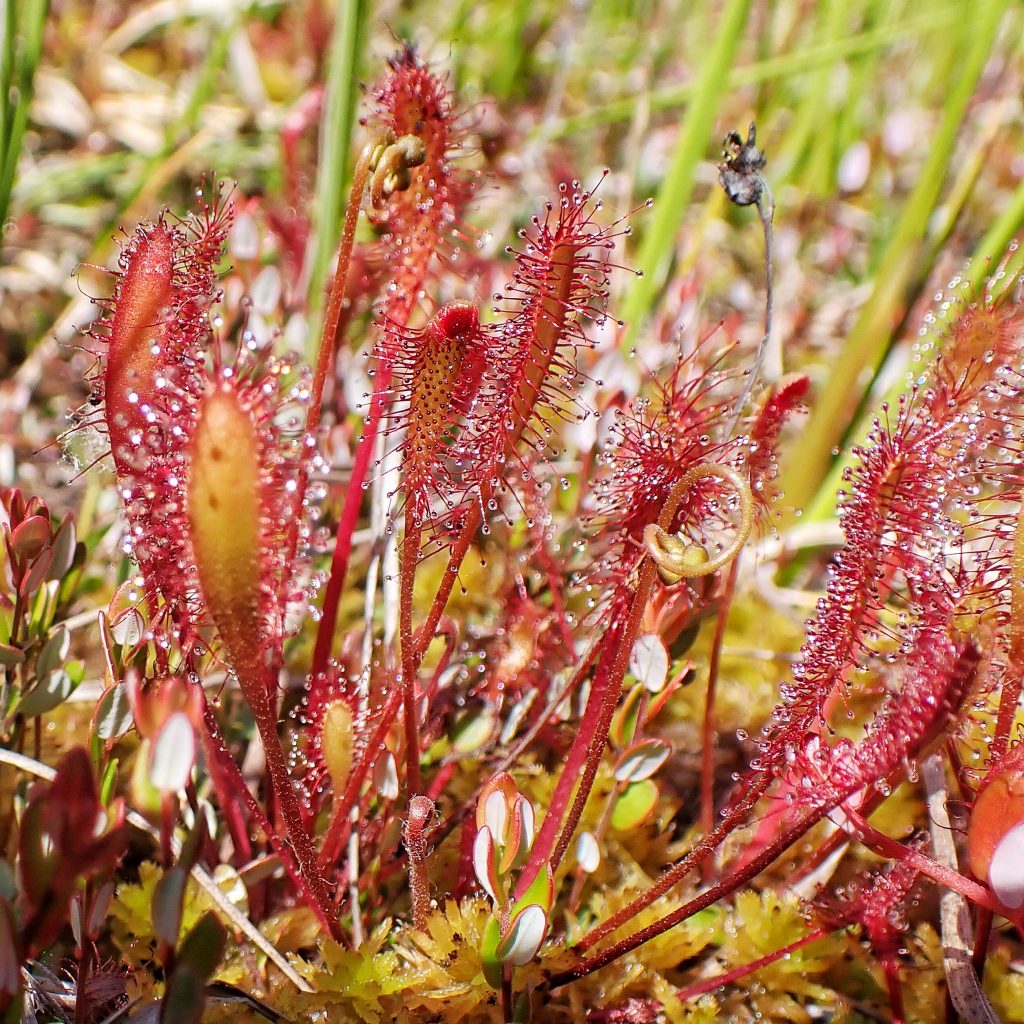
It is interesting that they say that Drosera anglica (which goes by the common names English sundew, great sundew, and line-leaved sundew) is less abundant than D. rotundifolia, and I’m sure that is true in general, but in the location where I took most of these photos (trips I discussed in the blogs South Prairie and A Trip to Mt. Adams ) D. anglica outnumbered D. rotundifolia (where I have a slightly greater depth of information because I didn’t want to repeat myself) by a factor of about a hundred. I wish I was a better photographer so I could show you how it carpeted the soggier portions of this bog/fen, but my photos don’t do it justice. It was simply beautiful, with mostly red leaves bejeweled by a bajillion tiny drops of deadly sticky nectar that sparkled in the sunshine.
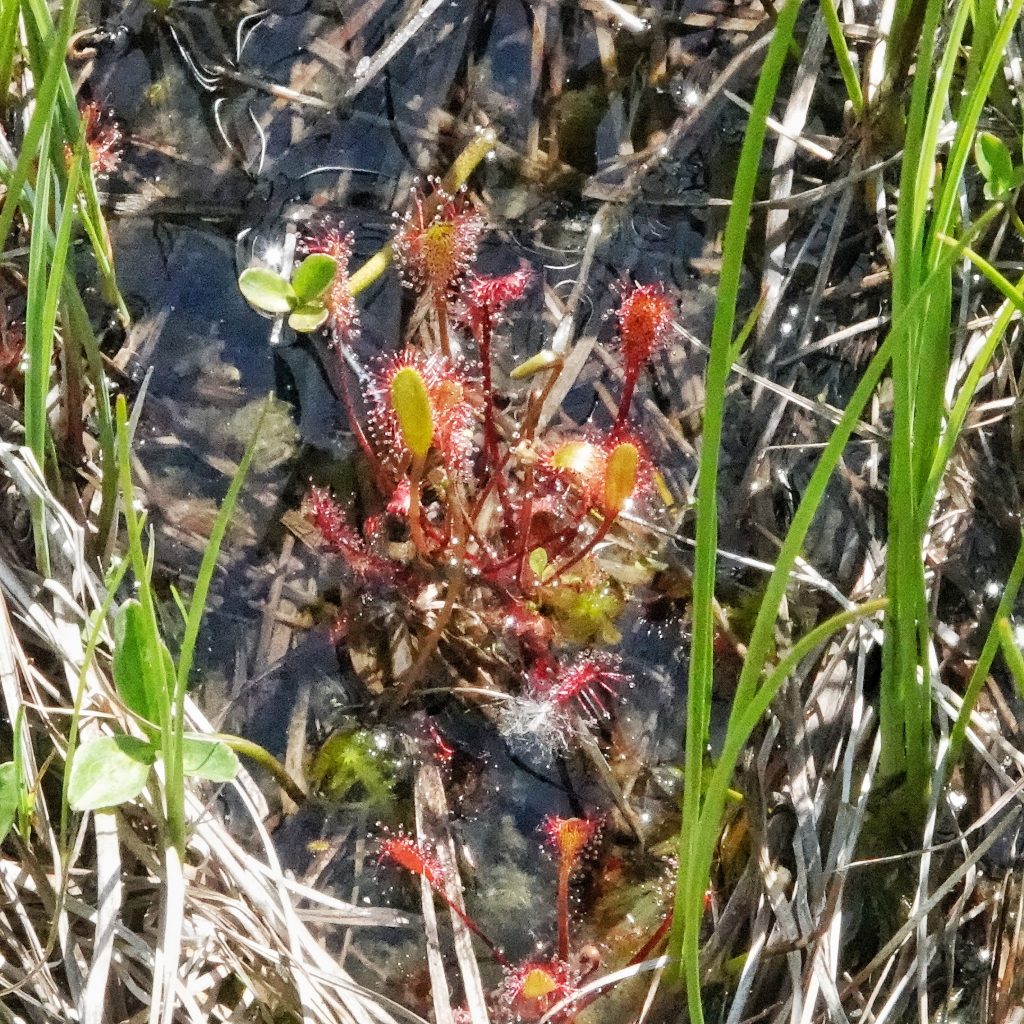
“Like all sundews, D. anglica uses stalked mucilaginous glands called tentacles which cover its laminae to attract, trap, and digest small arthropods, usually insects. These are attracted by a sugary scent exuded by the glands, and upon alighting on the plant adhere to the sticky drops of mucilage. Although most of its prey consists of small insects such as flies, bulkier insects with large wings are also caught. Small butterflies, damselflies, and even dragonflies can become immobilized by the plant’s sticky mucilage. The plant’s initial response to contact with prey consists of thigmotropic (movement in response to touch) tentacle movement, with tentacles bending toward the prey and the centre of the leaf to maximize contact. D. anglica is also capable of further movement, being able to bend the actual leaf blade around prey to further the digestion process. Tentacle movement can occur in a matter of minutes, whereas the leaf takes hours or days to bend. When something gets caught, the tentacles touching the prey exude additional mucilage to mire down the prey, which eventually dies of exhaustion or is asphyxiated as the mucilage clogs its tracheae. Once the prey has been digested and the resulting nutrient solution has been absorbed by the plant, the leaf unfurls, leaving only the prey’s exoskeleton behind.” Drosera anglica
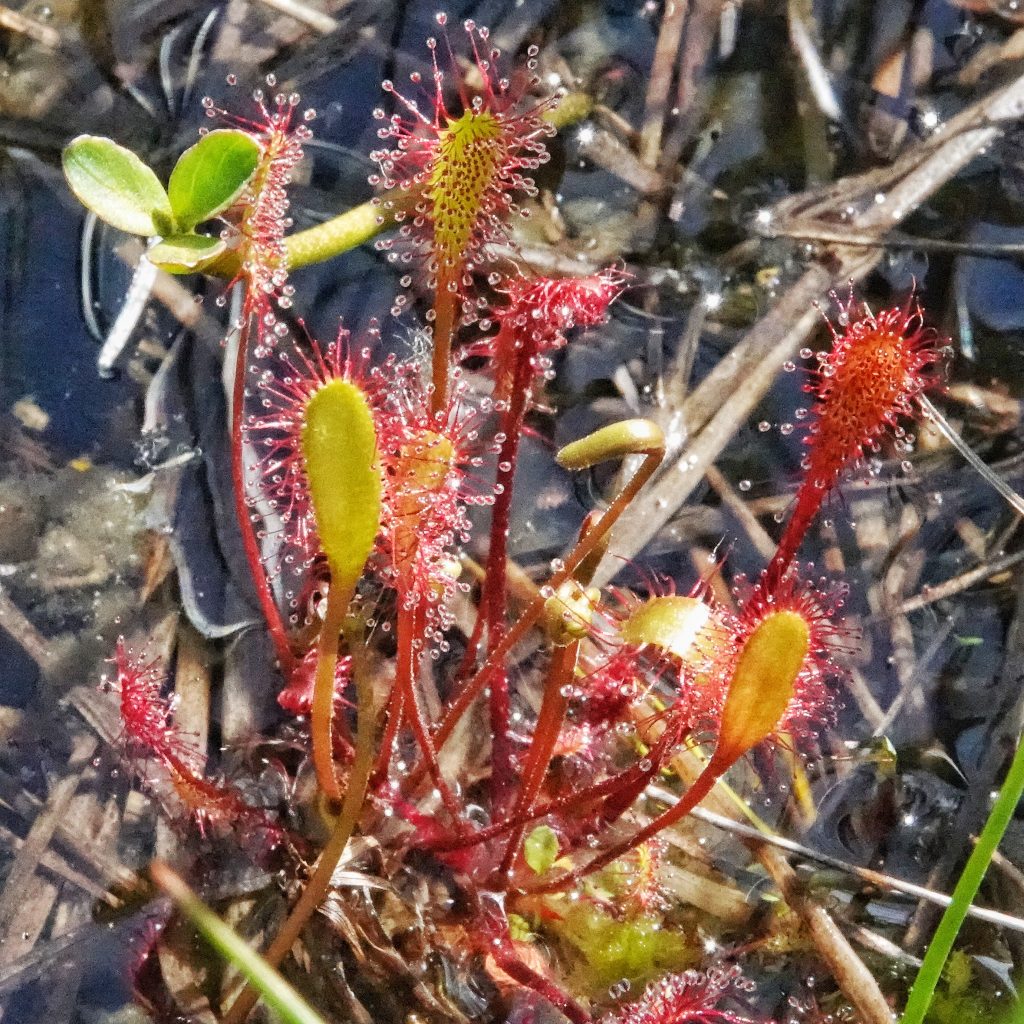
This species has a wider range of prey than D. rotundifolia, and seems to not exploit its pollinators as a food source. “The diverse prey spectrum included at least 109 species in 94 genera in 26 of 37 identified families representing 11 arthropod orders. The most common prey were adult flies of Nematocera, particularly Ceratopogonidae (50%) and Chironomidae (42%). The following taxa were periodically abundant: Acarina, Diptera–Cecidomyiidae, Chloropidae, Sciaridae, Hemiptera nymphs and Thysanoptera–Thripidae. Flies (Diptera) were chief flower visitors (95%), dominated by Syrphidae (66%), Bombyliidae and Muscidae (10% each), Calliphoridae (7%), Tachinidae and Dolichopodidae (3% each). Additionally, visitors were a bee (Hymenoptera–Halictidae) and thrips (Thysanoptera–Thripidae). Four families were common to both guilds: Diptera–Dolichopodidae, Muscidae, Tachinidae; and Thysanoptera–Thripidae. However, direct comparisons of identified taxa within these families showed that overlap between flower visitors and prey occurred for Thrips sp. larvae alone, which comprised only 3% of all flower visitors and 0.5% of prey. Drosera anglica exploits distinct guilds of insects for pollinators and prey.” drosera anglica – Google Scholar
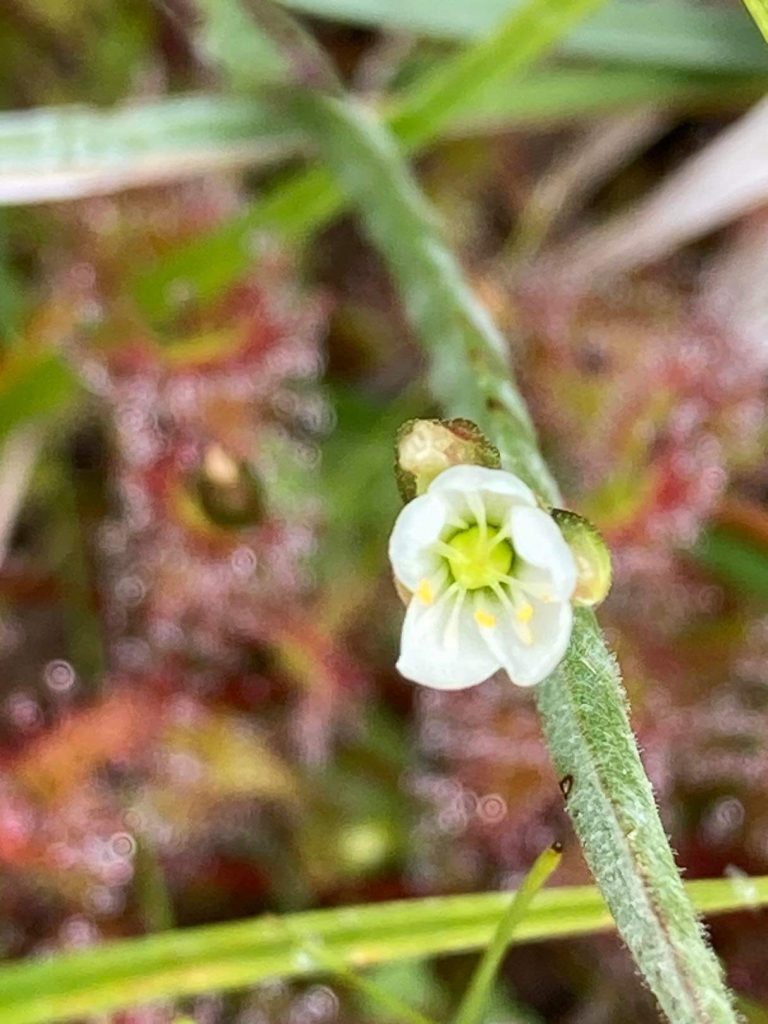
After reading me whine in the profile of D. rotundifolia about not finding any of these plants in bloom, my friend Steve Sheehy kindly sent me this photo.
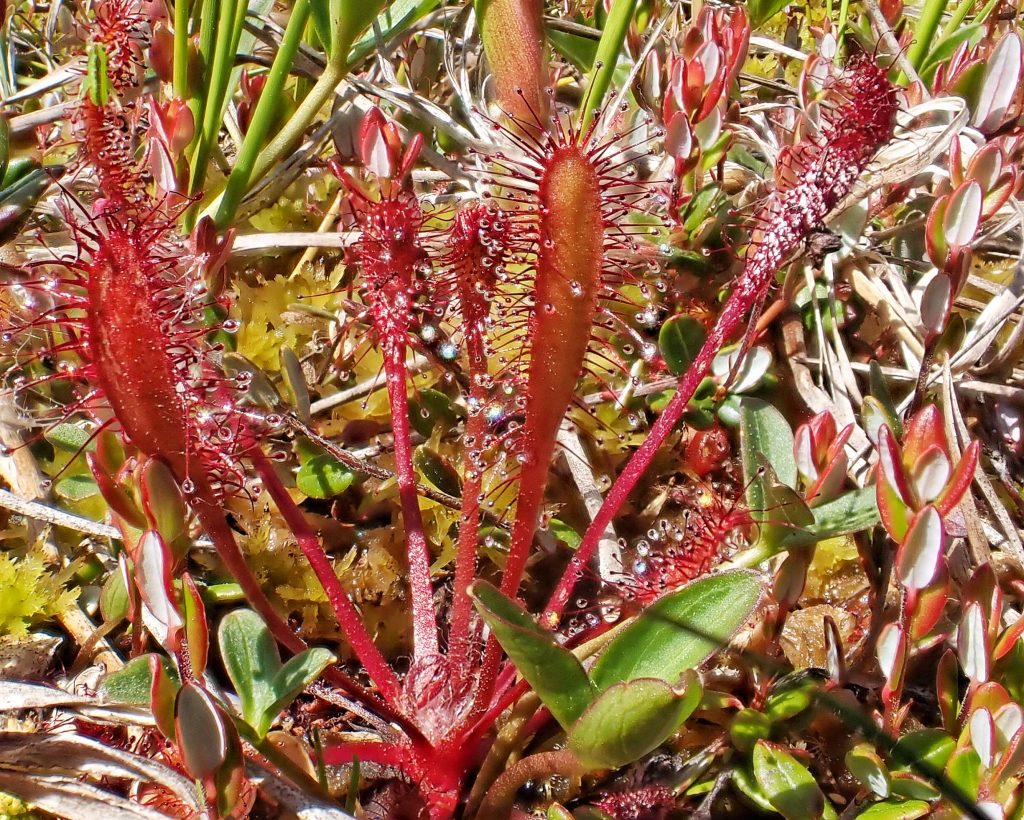
Description– “Bog-loving, scapose, perennial herbs, the scapes 6-18 cm. tall. Leaves: Leaves all basal, ascending to erect, the blades at least twice as long as wide, glandular-viscid, ascending to erect, narrowly oblong-oblanceolate to spatulate-oblong, 1-3 cm. long and 3-5 mm. broad, gradually narrowed to petioles 1.5-8 cm. long. Flowers: Inflorescence of 1-2, somewhat 1-sided, 2- to 7-flowered racemes; calyx deeply 5-lobed, the lobes ovate-oblong; petals 5, white, oblong, longer than the calyx; stamens 5, slightly shorter than the petals; styles 4-5, bifid 2/3 their length. Fruits: Capsule 1-celled” Drosera anglica – Burke Herbarium Image Collection
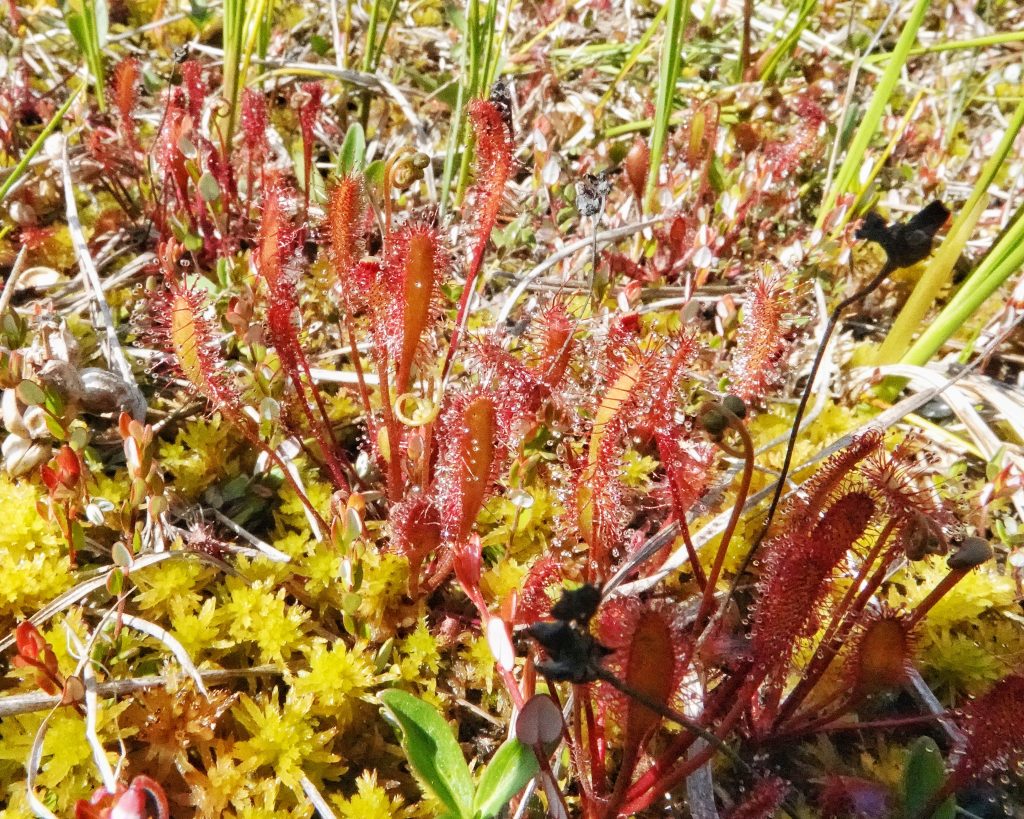
Similar species– Drosera rotundifolia has round to egg shaped leaves that are more horizontally inclined; “Drosera anglica has been known to hybridize with D. rotundifolia to form the named hybrid “species” D. × obovata, a sterile triploid. These hybrids are intermediate in nearly all morphological characters.” OregonFlora Drosera anglica
Ethnobotany– I can find no ethnobotanical, herbalist, or foraging information specific to this species, but it is probably similar to that for Drosera rotundifolia.
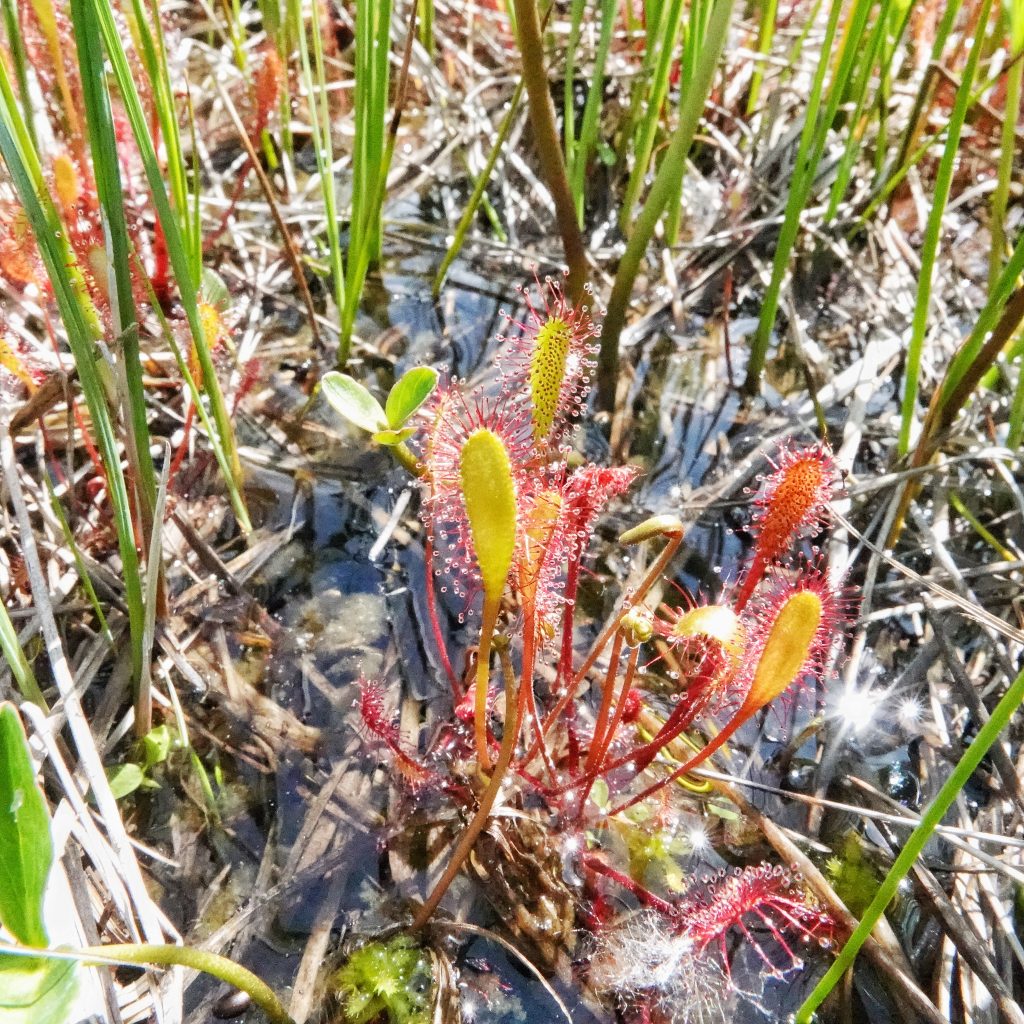
Habitat– “English Sundew grow with Spaghnum moss in wet, organic soils of fens in the montane zone (Lesica et al. 2012). Plants may also occur in grass or sedge dominated seeps (Rice 2019).” English Sundew – Montana Field Guide
Range– “ D. anglica is one of the most widely distributed sundews in the world. It is generally circumboreal, meaning that it is found at high latitudes around the globe. In a few areas, however, it is found farther south, particularly in Japan, southern Europe, the Hawaiian island of Kaua’i, and California. Plants from the Hawaiian population are generally smaller than normal and do not experience a winter dormancy period. Its natural habitat includes 12 U.S. states, including Alaska, and 11 Canadian provinces and territories. The altitudinal range is from 5 m to at least 2000 m.” Drosera anglica; in the PNW it is found primarily in the Cascades, and the Rockies and their associated ranges; may have disjunct populations in low elevation bogs around the Puget Sound.
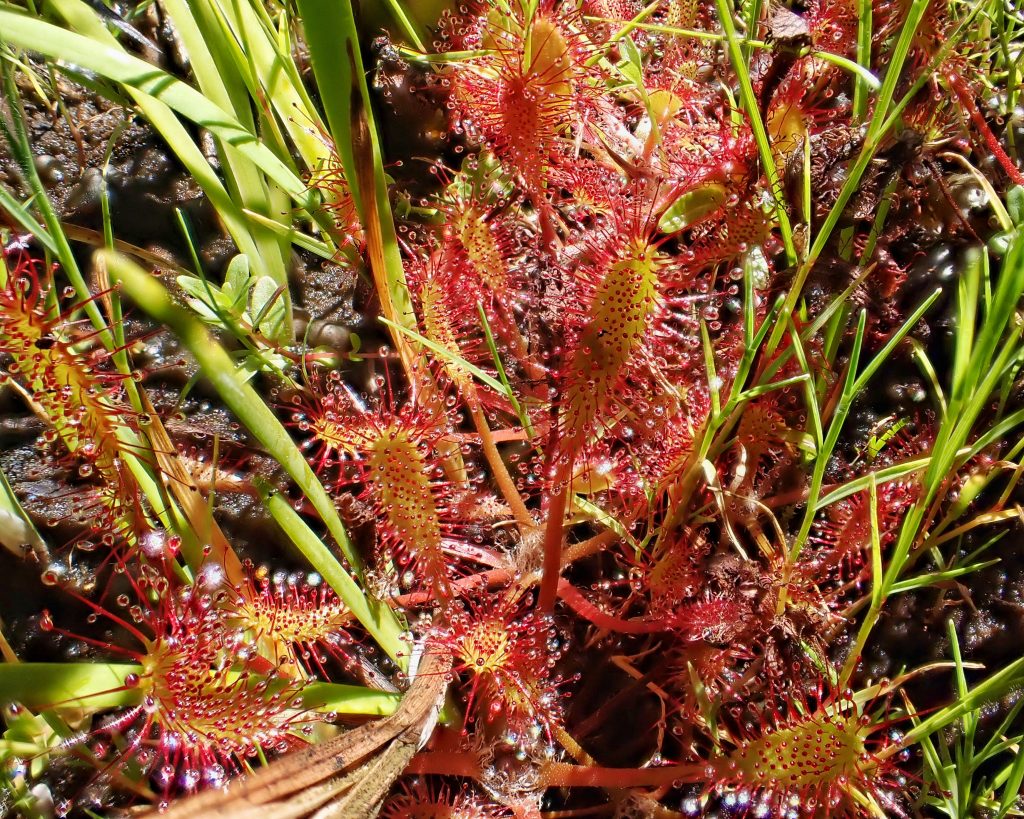
Eaten by– I can find no information on anything that eats this plant.
Reproductive timing– Flowers June into September
Etymology of names–Drosera is from the Greek word for ‘dewy’, an allusion to the secretions that glisten on the hairs. The specific epithet anglica is from the Latin word for ‘English’, and refers to the locality of the type specimen.
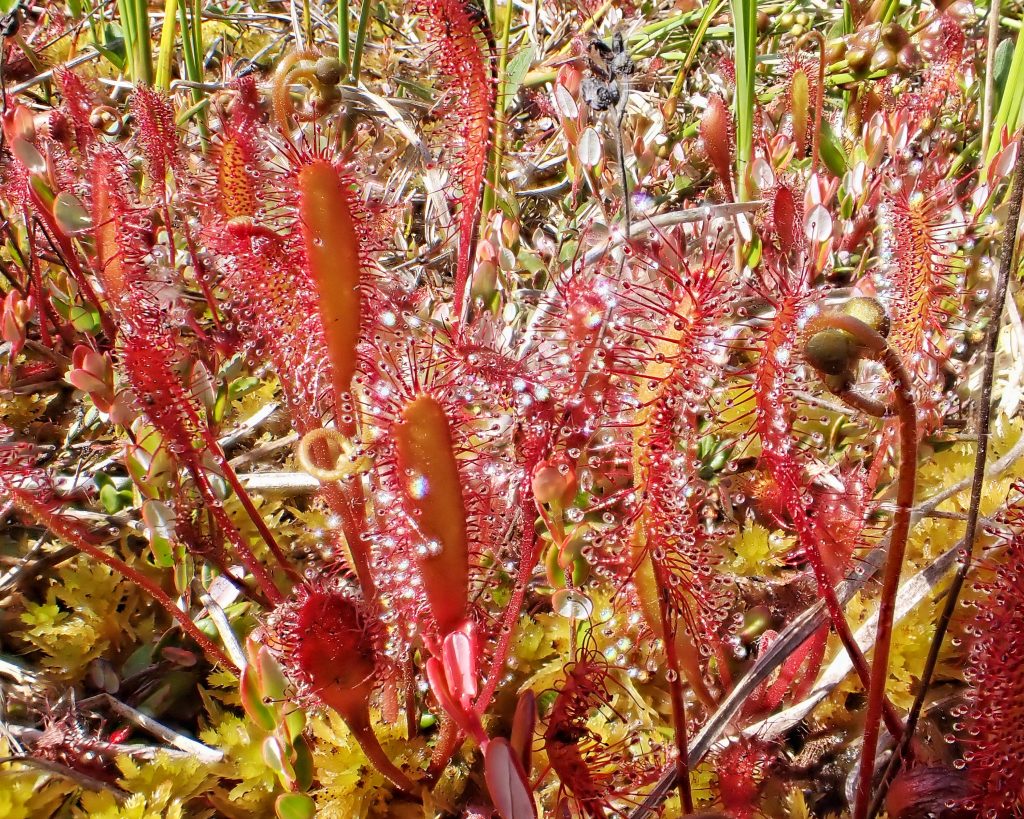
English Sundew – Montana Field Guide
Great sundew • Drosera anglica – Biodiversity of the Central Coast
Drosera anglica – Burke Herbarium Image Collection
https://www.fs.usda.gov/Internet/FSE_DOCUMENTS/stelprdb5206847.pdf
Drosera anglica : English Sundew | Rare Species Guide | Minnesota DNR
Drosera anglica (English sundew) – Michigan Natural Features Inventory
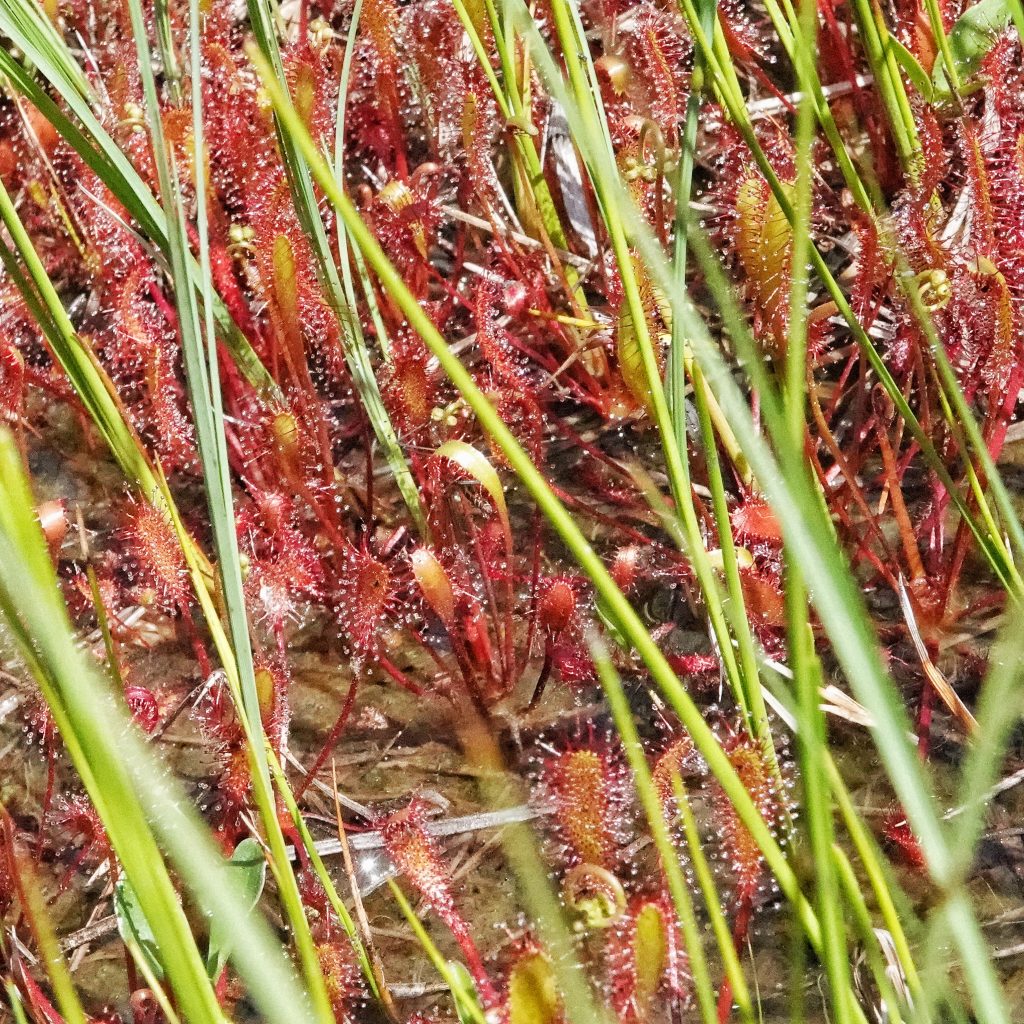
One I have never seen. I have seen D. rotundifolia many times. Mostly, I am familiar with low-elevation bogs, however.
I was really surprised by how many there were, and how densely they were packed!
Superb pics!
Thank you, Dan.
Thanks, Brooke! It’s a beautiful plant. Glad I didn’t detract from its beauty!
My eyes are going to be peeled for Drosera now. I had no idea!
Know any good bogs, Kat?
Hmmm. I spend a lot of time in riparian areas, and some of those are marshy. Not sure about bogs, other than the three pair of Bogs in my closet.
I’ll keep you posted if I find some.
I look forward to hearing about them, Kat!